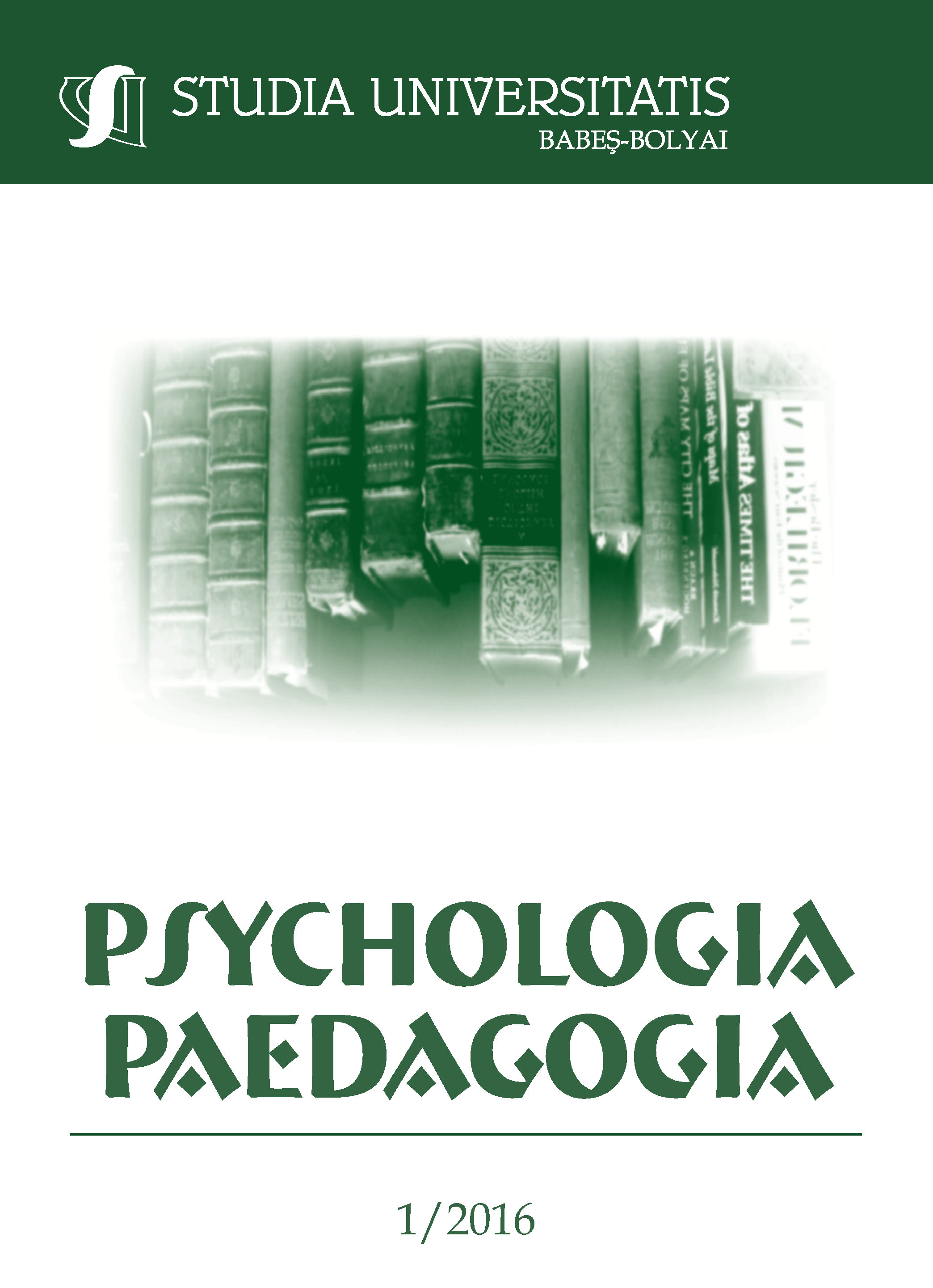THE INFLUENCE OF BACCALAUREATE AVERAGE SCORE ON ACADEMIC ACHIEVEMENT OF UNDERGRADUATES
Keywords:
Pedagogy of primary and Preschool Education, baccalaureate exam average grade, average grade per semester, GPA, access requirements, academic success.Abstract
The present study researched: 1.The correlation among the baccalaureate average grade for admission to the university and average grades earned each semester 2. The correlation among grades for each semester of the three year program. The data used in this study includes scores and grades for the 125 students who had taken their entrance exam in the 2012/2013 academic year. Data was analyzed using the Bravais-Pearson correlation coefficient and the Cohen criteria for analyzing effect size. The results indicate that there is a significant positive correlation between the entrance scores and the grades for the first five semesters. The data indicate that the correlation between the exam average and GPA average is not significant for the last semester. The effect size scores indicate that this significance is medium for the first two semesters (.48 and .43); the effect size is low for the next three semesters (.37, .22, .20). The results also indicate there are significant positive correlations between the GPA of each of the semesters. These results indicate that each semester’s GPA average has a high effect size score for the subsequent semesters. The effect size scores are lower for each subsequent semester but remain in the high effect size levels, ranging from .82 to .72. The conclusion drawn from this data is that in order to develop more consistent decision-making predictions the university should use both baccalaureate averages and GPA both in the transition from high school to university and between semesters and years within the university program.
ZUSAMMENFASSUNG. Die vorliegende Studie erforschte: 1. Die Korrelation zwischen dem Bakkalaureat Durchschnittsnote für die Zulassung zur Universität und die Durchschnittsnoten erwarb jedes Semester. 2. Die Korrelation zwischen den Noten für jedes Semester des Dreijahresprogramm. Die Daten verwendet in dieser Studie umfassen Noten und Wertungen für 125 Studenten, die ihre Aufnahmeprüfung im Studienjahr 2012/2013 übernommen haben. Die Daten wurden mit dem Bravais-Pearson-Korrelationskoeffizient und die Cohen Kriterien für die Effektgröße analysiert. Die Ergebnisse zeigen, dass es eine signifikante positive Korrelation zwischen den Eingangswertungen und die Noten für die ersten fünf Semester gibt. Die Daten zeigen, dass die Korrelation zwischen der Prüfung Durchschnitt und GPA Durchschnitt für das letzte Semester nicht signifikant ist. Die Effektgröße Werte zeigen, dass diese Bedeutung für die ersten beiden Semester Medium ist (0,48 und 0,43); die Effektgröße ist für die nächsten drei Semestern niedrig (0,37, 0,22, 0,20). Die Ergebnisse zeigen auch, dass es eine es signifikante positive Korrelation zwischen der GPA jedes Semester gibt. Diese Ergebnisse zeigen, dass GPA Durchschnitt jedes Semesters eine hohe Effektstärke- Wert für den nachfolgenden Semestern hat. Die Effektgröße Werte sind niedriger für jedes weitere Semester aber bleiben in den hohen Effektgröße Niveaus, von 0,82 bis 0,72. Die Schlussfolgerung anhand diesen Daten ist, dass, um einheitlichere Entscheidungsfindung Prognosen zu entwickeln, sollte die Universität sowohl Bakkalaureat Durchschnittswerte und GPA in den Übergang von Gymnasium zur Universität und zwischen Semester und innerhalb Jahren der Universität Programm verwenden.
Schlüsselwörter: Pädagogik der Grund- und Vorschulbildung, Abitur-Prüfung Durchschnittsnote, Notendurchschnitt pro Semester, GPA, Zugangsvoraussetzungen, akademischen Erfolg
References
Bean, J. (2012). College Student Retention - Defining Student Retention, A Profile of Successful Institutions and Students, Theories of Student Departure retrieved from: http://www.se.edu/dept/native-american-center/files/2012/04/College-Student-Retention-Defining-Student-Retention-A-Profile-of-Successful-Institutions.pdf
Bean, J. & Eaton, S.B. (2000). A Psychological Model of College Student Retention. In Rethinking the Departure Puzzle: New Theory and Research on College Student Retention. Ed. John M. Braxton. Nashville, TN: Vanderbilt University Press.
Chamorro-Premuzic, T. & Furnham, A. (2003). Personality traits and academic examination performance. European Journal of Personality.V. 17, Issue 3.
Cohen, J. (1988). Statistical Power Analysis for the Behavioral Sciences. Lawrence Erlbaum Associates, Inc.
Fitzgerald, C. & Laurian, S. (2013). Caring Our Way to More Effective Learning. Procedia-Social and Behavioral Sciences. V. 76.
Geiser, S.& Santiceles, M.V. (2007). Validity of high-school grades in predicting student success beyond the freshman year: High school record vs.standardized tests as indicators of four-year college outcomes. Center for studies in Higher Education, Research and Occasional Paper Series:CSHE.6.07 retrieved from: http://files.eric.ed.gov/fulltext/ED502858.pdf
Harackiewicz, J., Tauer, J., Barron, K. & Elliot, A. (2002). Predicting Success in College: A Longitudinal Study of Achievement Goals and Ability Measures as Predictors of Interest and Performance From Freshman Year Through Graduation. Journal of Educational Psychology. V. 94, No.3.
Himelstein, H.C. (1992). Early identification of high-risk students: Using non-cognitive indicators. Journal of College Student Development. 33.
Hossler, D. & Bean, J. (1990). The Strategic Management of College Enrollments. SanFrancisco: Jossey-Bass Inc.
Johnson, R. & Fitzgerald, C. (2013) A study of the emotional climate in the classroom. The New Hampshire Journal of Education. V. 16.
Laurian-Fitzgerald, S. (2015). Mentoring Non-Traditional Undergraduate university Students. International Journal of Education Psychology in the Community. V. 5, Issues 1 &2.
Laurian-Fitzgerald, S., Popa, C., & Fitzgerald, C. (2015). The Race to Reach Standards. Romanian Journal of School Psychology. V. 8, N. 16.
McKenzie, K. & Schweitzer, R.D. (2001). Who succeeds at university? factors predicting academic performance in first year Australian university students. Higher Education Research & Development. 20.
Metzner, B. & Bean, J. (1985). A Conceptual Model of Nontraditional Undergraduate Student Attrition. Review of Educational Research: 485-540.
National Center for Education Statistics, (2013). Digest of Education Statistics, Table 305.10, Table 326.10, and Table 326.20, retrieved from: http://nces.ed.gov/programs/digest/2013menu_tables.asp.
Retention and student success: Implementing strategies that make a difference (n.d.) retrieved from: http://www.ellucian.com/Insights/Retention-and-student-success--Implementing-strategies-that-make-a-difference/
Roşeanu, G. & Drugaş, M. (2011). The admission criteria for the university as predictors for academic performance: A pilot study. Journal of Psychological and Educational Research, 19(2), 7-19.
Tinto, V. (1993). Leaving College: Rethinking the Causes and Cures of Student Attrition, 2nd edition. Chicago: University of Chicago Press.
Tinto, V. (2006-2007). Research and practice of student retention: What next? Journal of College Student Retention: Research, Theory & Practice, 8(1), 1-20.
Downloads
Published
How to Cite
Issue
Section
License
Copyright (c) 2016 Studia Universitatis Babeș-Bolyai Psychologia-Paedagogia

This work is licensed under a Creative Commons Attribution-NonCommercial-NoDerivatives 4.0 International License.





